Advertisement
Coronavirus Testing In Boston's Homeless Community Shows Shelter Size And Density Matter
Resume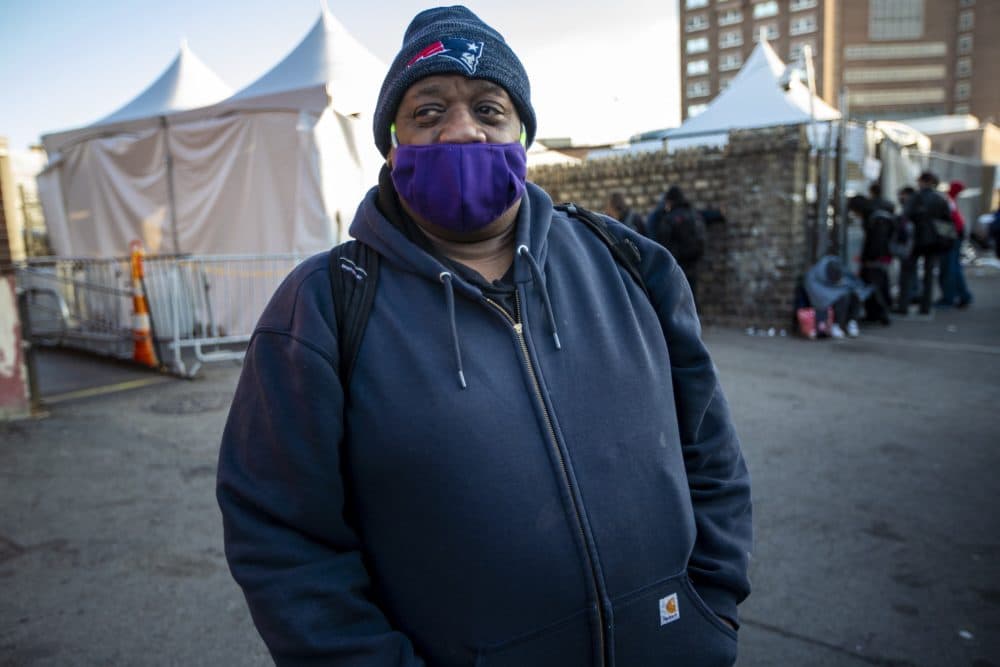
Dennis Watkins says in the initial weeks of the pandemic, he wasn't worried about the coronavirus. That's even though he's homeless and stays among hundreds of other men at Boston's public shelter on Southampton Street.
"It was no big deal. Not to me personally," the 60-year-old Watkins says. "I didn't think nothing of this coronavirus until it hit home."
Reality hit a few weeks ago, after medical crews showed up at the shelter to test everyone.
"I got diagnosed with the coronavirus," Watkins says. "Was kind of eye opening, because I didn't think I had it, you know, and I was like, 'Wow, I can't believe it. I got the coronavirus.'"
Watkins felt fine. He didn't have any symptoms. But he was still worried.
He was sent to isolate at the state-run Newton Pavilion on the Boston Medical Center campus. That was opened to care for people who are homeless and have the coronavirus.
Watkins says he was tested again a week later and came up negative. He was relieved — ecstatic, even.
"It was like a big load off, because all the time I was there, I was like, 'Am I going to die?' You know, 'What's going to be ... my next steps?'"
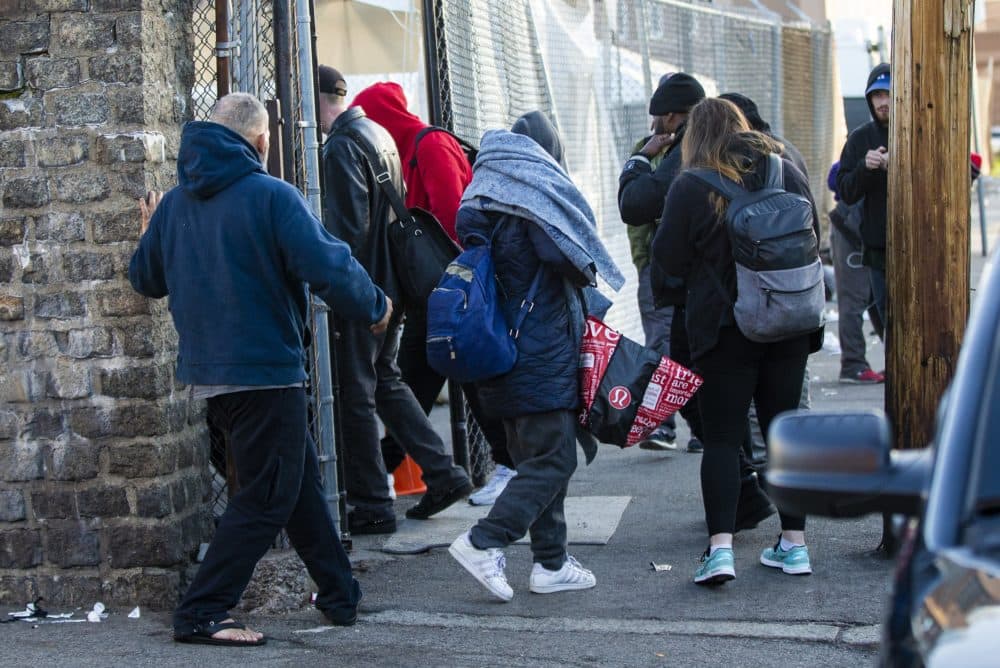
Watkins is one of 742 adults who are homeless in Boston who have tested positive for the coronavirus. That's nearly one-third of the 2,317 people tested since March 12. On Friday, city officials released comprehensive results from those tests. They include data from the universal testing performed at the city's adult emergency homeless shelters starting at the beginning of April. And the results reveal important trends.
The vast majority of those who tested positive, like Watkins, had no symptoms or just mild ones, according to Boston Health Care for the Homeless Program (BHCHP), which conducted the testing.
BHCHP President Dr. Jim O'Connell says he finds the high rate of asymptomatic spread alarming.
"It's a very baffling situation for us," he says. "We've been questioning — and without any knowledge at this point — could there be a slightly different or mutated strain that we see passing so asymptomatically in the shelter settings?"
O'Connell says researchers and clinicians also wonder whether — since people without symptoms are probably spreading smaller levels of the virus — that asymptomatic spread could lead to milder illness in those who catch it. O'Connell predicts that idea will be further explored — that scientists will re-examine test swabs to check the viral load in each one.
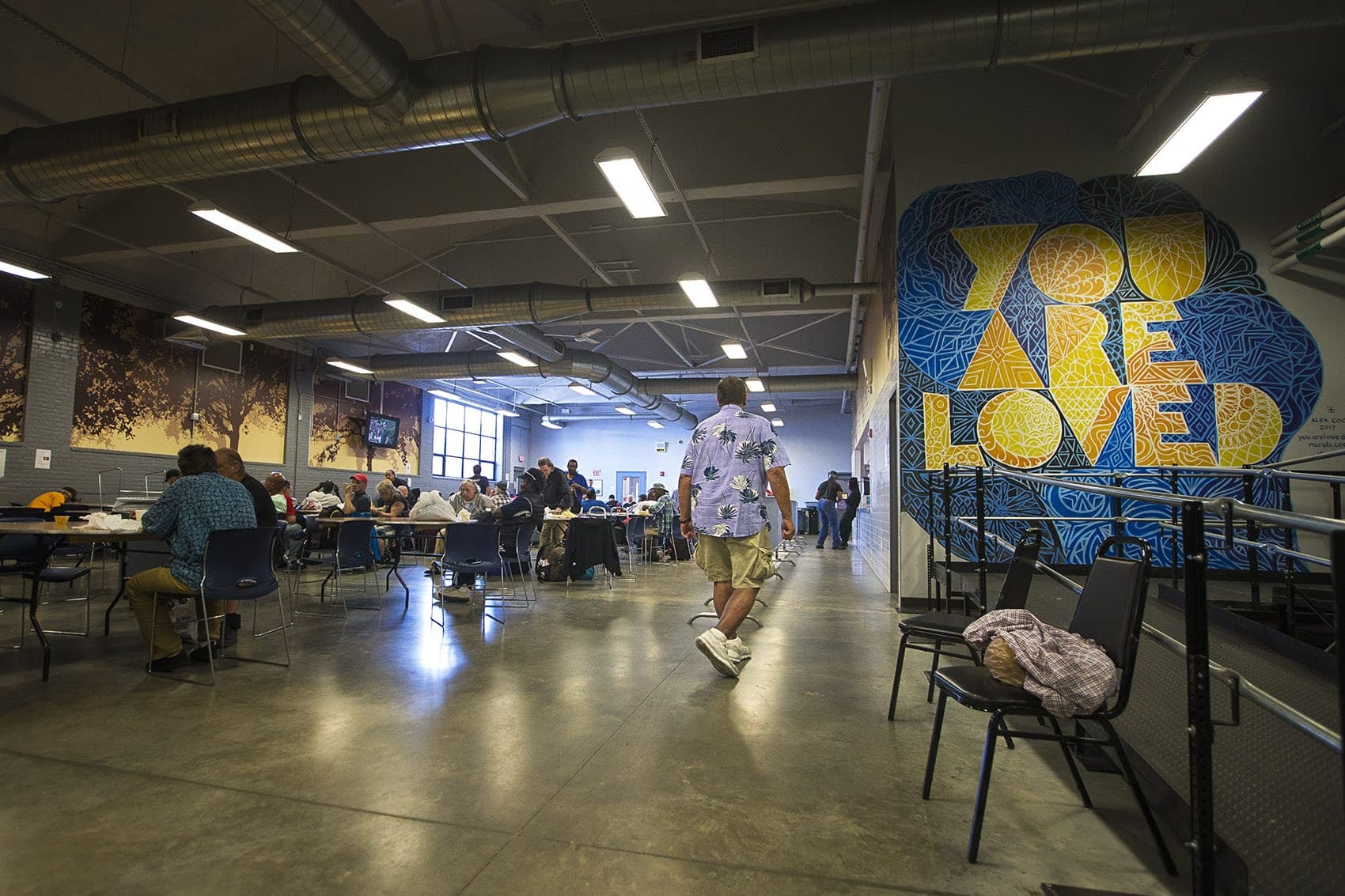
BHCHP says only a small percentage of patients have been hospitalized for COVID-19. But the clinicians point out there will always be people in the homeless population who are especially vulnerable. Many have chronic underlying medical conditions.
Seven people who were homeless in Boston are known to have died from COVID-19, according to O'Connell.
"And those deaths have been primarily in people who were elderly and quite compromised with cancer or severe heart problems or severe lung problems," he says.
Large Shelters See Higher Rates Of Infection
Homeless service providers have noted another important trend in the results: larger, more crowded shelters see more coronavirus transmission.
The first mass testing happened at the Pine Street Inn in early April.
Thirty-six percent of guests at the facility tested positive. The shelter had weeks earlier increased safety and hygiene protocols by installing portable hand washing stations, doing daily deep cleaning, staggering meal times and hanging plastic curtains between beds.
Pine Street Inn President and Executive Director Lyndia Downie said at the time that it was painful to get the test results.
"This is not going to be a disease of equity," she said. "The people who already have had the least are going to lose the most."
Boston's other large emergency shelters — the Southampton Street men's shelter and the Woods Mullen women's shelter, both run by the Boston Public Health Commission — had similar rates of coronavirus infection. Thirty-seven-percent of the guests at Southampton Street and 33% of those at Woods Mullen tested positive.
Downtown, Boston Rescue Mission has had a different experience with the pandemic.
The organization's president, John Samaan, says 68 guests tested were tested last week. All of them came up negative for the coronavirus.
"When we got the results on Sunday night, it was a major relief," Samaan says.
One employee tested positive and went into isolation.
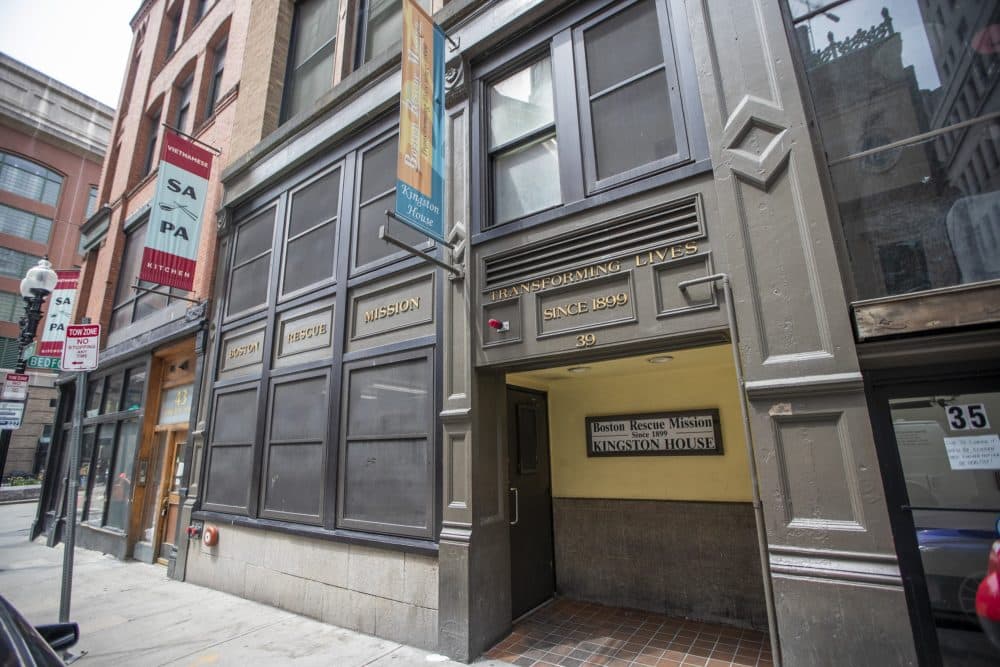
In mid-March, two guests and one worker at the rescue mission fell ill with COVID-19. Samaan says the shelter drastically changed its practices as a result.
"We had to cut down on the number of people we serve," he explains. "We ... on a daily basis clean the facility maybe five or six times a day ... We increased the space between the beds."
The staff requires people to line up six feet apart to enter the facility. A worker squeezes liquid soap into their hands and has them wash at a bank of sinks the minute they come in. People are spread out three to a table, instead of eight, during meals.
But perhaps most importantly, Samaan ordered masks from China early. By March 15, everyone at the shelter was required to wear one.
"When we got the masks we felt a little bit of relieved that at least we are able to protect the people we serve a little bit better," he says.
He knows his clients are still at risk, though.
"Our main concern is what happens ... after they leave in the morning ... because they always hang around and they smoke together and they chat together," he says. "And that is the concern, is people passing it to each other outside."
Calls For Continued Testing, Less Crowded Shelters
During the day, lots of people without a home spend time at St. Francis House. Testing a few weeks ago found 10% — 18 of 184 shelter clients — tested positive, according to St. Francis House.
Like Samaan at the rescue mission and other homeless service providers, St. Francis House President and CEO Karen LaFrazia — who had COVID-19 herself — wants testing to happen regularly in the homeless community.
"We have a moral obligation to take care of the most vulnerable people," LaFrazia says. "And it's a public safety issue. It's a public health issue. We have to test and we have to de-populate the shelters."
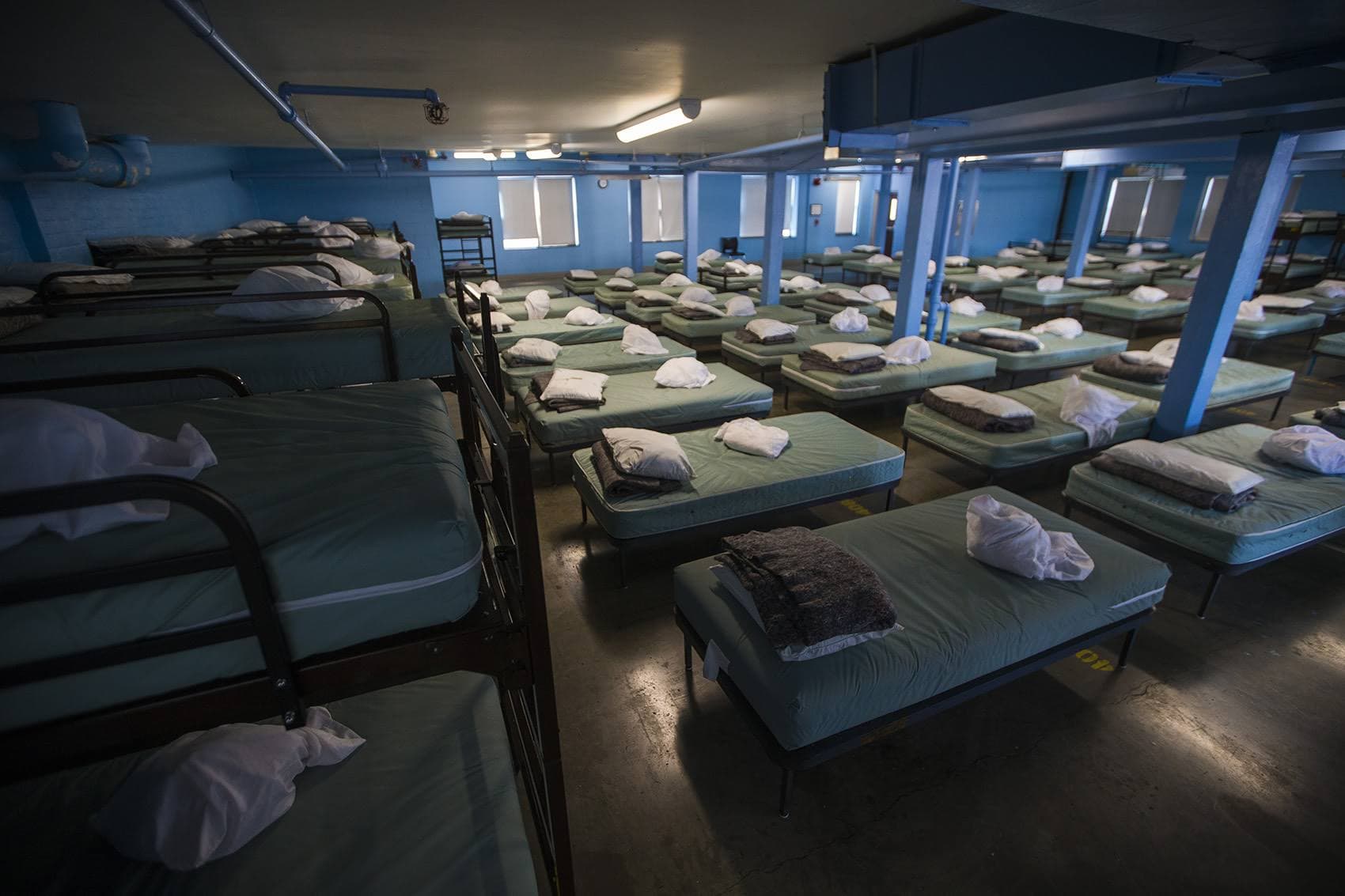
Boston's health and human services chief, Marty Martinez, agrees. He says the city is considering a second round of universal testing but also thinking about how to move on from this. And that means no more warehousing of people in extremely crowded shelters.
"We can't go back to a situation that is as dense as it has been, which is much easier said than done," Martinez says. "Probably the biggest challenge is, likely, do we need additional permanent or temporary shelter space? And how long will we need that for before we have a vaccine, or before we have the ability to keep people well and healthy?"
Currently Boston has just one facility that's been set up to help reduce shelter populations during the pandemic. It's a Suffolk University dorm, where more than 200 people are staying. That's available until August.
People who test positive are isolating in three respite facilities — at the Boston Hope field hospital in the Seaport, Newton Pavilion at Boston Medical Center and Barbara McInnis House at the BHCHP headquarters.
Meanwhile, Dennis Watkins says he's taking the risks much more seriously. He doesn't know if he could get the coronavirus again.
"Now I don't go nowhere without a mask," he says.
He's hoping to use some new unemployment benefits to get an apartment. City leaders and homeless service providers say that is their priority — to get as many people as they can out of shelters and into the always-short-supply of permanent housing.
This segment aired on May 15, 2020.
